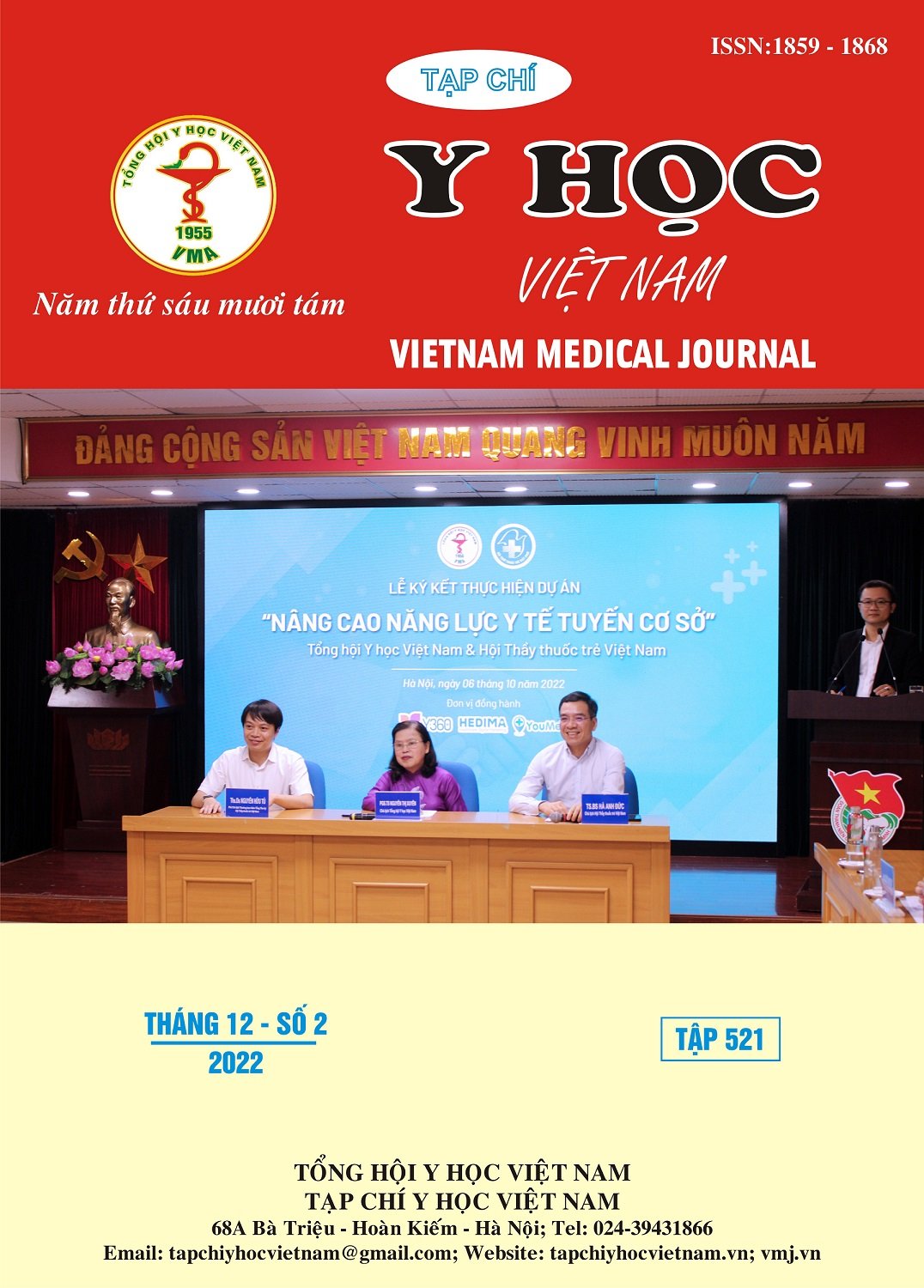COMMENT ON CLINICAL, SUBCLINICAL ATTRIBUTES AND RELATED FACTORS OF GESTATIONAL DIABETES MELLITUS PATIENTS
Main Article Content
Abstract
Objectives: Comment on the clinical and subclinical of GDM. Comment on several factors that relate treatment results of GDM. Subjects and methods: A retrospective and prospective description of 70 patients diagnosed with GDM, who had done medical examination and treatment at Bach Mai Hospital from 10/2020 to 10/2022. Results: Diabetes type 1 clinical symptomps (17,1%), type 2 (82,9%); average age 33.81±5.44(Min 24, Max 25). Time of recognition type 1 equal or lower than 5 years (77,14%), type 2 (84,5%). Histories of including diseases of GDM is Polycystic Ovary Syndrome – PCOS (8,6%), high blood pressure (10%). Obstetrical histories are big prenant and stillbirth(40%), miscarrying(15,7%). Family history who has diabetes or high blood pressure( 55,71%) with type II major than type I. BMI before childbirth 24,04 ±3,64 (Min 16,65, Max 36,76; obesity rate (62,85%). Excessive weight gain during childbirth 18 cases (25,7%). Pregnant women with pre-eclampsia and eclampsia (12,9%). Average blood glucose during hunger quarter I (7.48 ± 1.73), quarter II (8.00 ± 2.22), risen up quarter III (8.54 ± 2.37). Average HbA1C quarter I (7.34±1.13), quarter II (8.68±9.32), quarter III (7.85±1.57) (Min 5,6%, Max 15,9%). GFR dropped from phase IIIa (1,4%). Ophthalmological examination for diabetic eye disease (11,4%). Polyhydramnious quarter III (38,6%). Target treatment rate (44,3%). Treatment based diet, frequent exercises and weight gain related to blood glucose (p<0,05). End of childbirth with premature babies 45 cases (64,3%), mostly Caesarean (97,4%), weigh 3,01±0,65kg, fetal malformation 16 cases (22,9%). Conclusion: Gestational diabetes mellitus patients with good glucose control (44,3%) Diet, exercise, and weight control during pregnancy are associated with the effectiveness of diabetes treatment. Good glycemic control reduces post-partum complications of mother and fetus.
Article Details
Keywords
Diabetes, Gestational diabetes mellitus.
References
2. Alexopoulos AS, Blair R, Peters AL. Management of Preexisting Diabetes in Pregnancy: A Review. Obstetrical & Gynecological Survey. 2019;74(10):574-576. doi:10.1097/ OGX.0000000000000726
3. Lương Ngọc Khuê, Trần Hữu Dàng, Thái Hồng Quang, Nguyễn Thy Khuê. Hướng dẫn chẩn đoán và điều trị đái tháo đường típ 2. Published online December 30, 2020.
4. Wong TY, Sun J, Kawasaki R, et al. Guidelines on Diabetic Eye Care. Ophthalmology. 2018;125(10):1608-1622. doi:10.1016/j.ophtha.2018.04.007
5. Lưu Thị Thảo. Nhận Xét Kết Quả Kiểm Soát Glucose Máu và Một Số Yếu Tố Liên Quan ở Bệnh Nhân Đái Tháo Đường Mang Thai. Trường đại học Y Hà Nội; 2017. http://thuvien.hmu.edu.vn/pages/cms/FullBookReader.aspx?Url=/pages/cms/TempDir/books/130875c8-8205-46e0-8e0f-35b1eeca09f0/2018/10/10/201810101516-6754bf6d-537a-4980-ada6-12dd9f2f858e/FullPreview&TotalPage=100&ext=jpg#page/2/mode/2up
6. Raghavan R, Dreibelbis C, Kingshipp BJ, et al. Dietary Patterns before and during Pregnancy and Risk of Gestational Diabetes Mellitus: A Systematic Review. USDA Nutrition Evidence Systematic Review; 2019. Accessed October 6, 2022. http://www.ncbi.nlm.nih.gov/books/NBK579813/
7. Goldstein RF, Abell SK, Ranasinha S, et al. Association of Gestational Weight Gain With Maternal and Infant Outcomes. JAMA. 2017;317(21):2207-2225. doi:10.1001/jama.2017.3635
8. Szmuilowicz ED, Josefson JL, Metzger BE. Gestational Diabetes Mellitus. Endocrinology and Metabolism Clinics of North America. 2019; 48(3):479-493. doi:10.1016/ j.ecl.2019.05.001


